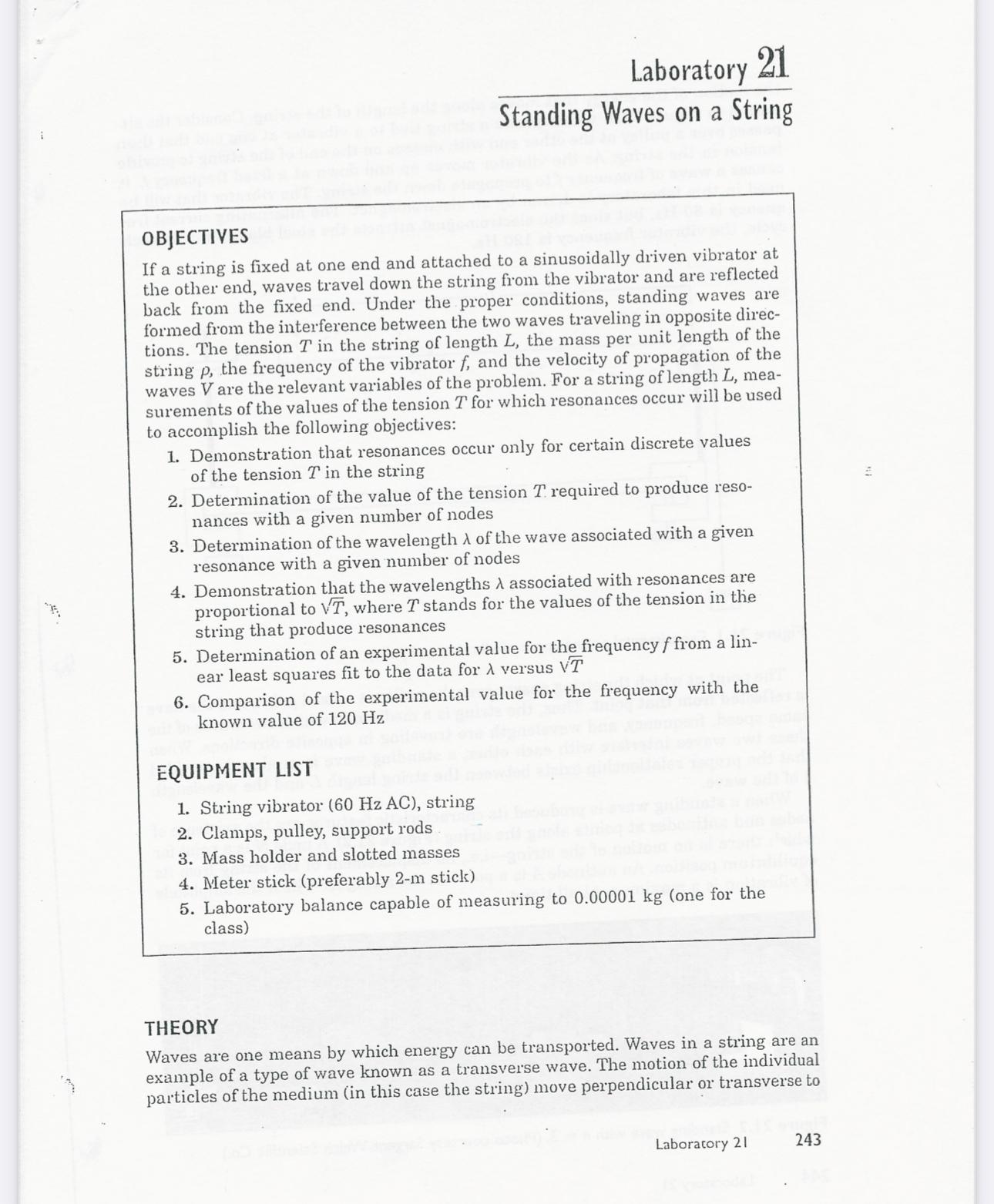Question
Laboratory 21 Standing Waves on a String OBJECTIVES If a string is fixed at one end and attached to a sinusoidally driven vibrator at the
Laboratory 21\ Standing Waves on a String\ OBJECTIVES\ If a string is fixed at one end and attached to a sinusoidally driven vibrator at the other end, waves travel down the string from the vibrator and are reflected back from the fixed end. Under the proper conditions, standing waves are formed from the interference between the two waves traveling in opposite directions. The tension
Tin the string of length
L, the mass per unit length of the string
p, the frequency of the vibrator
f, and the velocity of propagation of the waves
Vare the relevant variables of the problem. For a string of length
L, measurements of the values of the tension
Tfor which resonances occur will be used to accomplish the following objectives:\ Demonstration that resonances occur only for certain discrete values of the tension
Tin the string\ Determination of the value of the tension
Trequired to produce resonances with a given number of nodes\ Determination of the wavelength
\\\\lambda of the wave associated with a given resonance with a given number of nodes\ Demonstration that the wavelengths
\\\\lambda associated with resonances are proportional to
\\\\sqrt(T), where
Tstands for the values of the tension in the string that produce resonances\ Determination of an experimental value for the frequency
ffrom a linear least squares fit to the data for
\\\\lambda versus
\\\\sqrt(T)\ Comparison of the experimental value for the frequency with the known value of
120Hz\ EQUIPMENT LIST\ String vibrator (
60HzAC), string\ Clamps, pulley, support rods\ Mass holder and slotted masses\ Meter stick (preferably 2 -m stick)\ Laboratory balance capable of measuring to
0.00001kg(one for the class)\ THEORY\ Waves are one means by which energy can be transported. Waves in a string are an example of a type of wave known as a transverse wave. The motion of the individual particles of the medium (in this case the string) move perpendicular or transverse to\ Laboratory 21\ 243

Step by Step Solution
There are 3 Steps involved in it
Step: 1

Get Instant Access to Expert-Tailored Solutions
See step-by-step solutions with expert insights and AI powered tools for academic success
Step: 2

Step: 3

Ace Your Homework with AI
Get the answers you need in no time with our AI-driven, step-by-step assistance
Get Started


